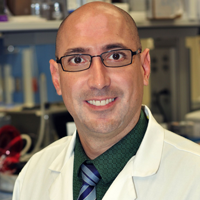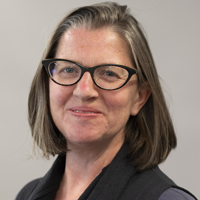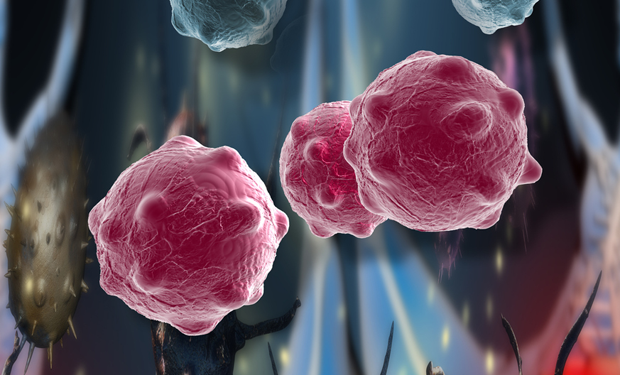Just 2 miles northeast of sleek downtown skyscrapers, across the Buffalo Bayou River from the Houston Astros’ Minute Maid Park, lies a landscape greener than most of the urban sprawl, but absent the charm of typical Southern suburbia. The Fifth Ward of Houston, TX, is dotted with a patchwork of homes with screenless windows, many desperately clinging to their beams, surrounded by twisted chain link fences patrolled by trotting packs of skeletal stray dogs. Broken roads are lined with piles of abandoned tires, and pools of stagnant, dirty water. It is here that Dr. Peter Hotez (Figure 1) illustrates one of the wealthiest countries in the world is not immune to poverty and its associated medical crises.

Hotez specializes in tropical medicine, which inadvertently makes him an expert in global poverty. He doesn’t have to look far. He works just south of Houston as the Dean of the National School of Tropical Medicine (NSTM), a school he founded in 2011 at the Baylor College of Medicine. There, he oversees the development of new vaccines and diagnostics, and also conducts outbreak and epidemiologic studies for Neglected Tropical Diseases, or NTDs, a name ascribed to a group of approximately 20 mostly chronic and debilitating infectious diseases like hookworm, West Nile, and Chagas. Nearly every member of the bottom billion—the poorest segment of the global population—has at least one of these diseases. Most are caused by parasites—worms and protozoa—acquired through an animal vector or poor sanitation.
Although many NTDs are found in war-torn and impoverished countries, “most of the world’s poverty-related, neglected diseases are actually not in the world’s poorest countries but are predominantly in the G20 countries, that is, the 20 wealthiest economies,” according to Hotez. NTDs, Hotez says, are ever-present in forgotten, poverty-stricken neighborhoods like the Fifth Ward. He and his collaborators have found human hookworm transmission in Alabama; Chagas transmission and mosquito-borne viruses like West Nile, Dengue, Zika, and Typhus in Texas. Every poverty-stricken area where they have looked, they have found NTDs. “It just seems difficult for people to get their arms around this paradoxical rise of neglected diseases in wealthy countries,” he said, “we could probably melt away two-thirds of the world’s neglected diseases just by the G20 countries paying attention to their own vulnerable poor.”
Areas like the Fifth Ward, where sanitary conditions are lacking and infrastructure is decrepit, are ripe for disease. Helminths, or parasitic worms, contaminate soils and stagnant water, and enter their host either orally or through the skin. Hookworm infection, known to some by the gruesomely descriptive name Creeping Eruption, enters the body when the skin comes into contact with contaminated soils.
It begins with a maddeningly itchy rash, but morphs into an infection that can have lifelong consequences— childhood and maternal anemia, for instance, which inhibits child development, pregnancy outcomes, and work productivity. Globally, it’s one of the most common infections, and most economically burdensome, costing countries around the world between U.S. $7.5 billion and U.S. $140 billion annually. And that’s just hookworm. Anywhere between 600 to 800 million people worldwide, mostly children, have soil-transmitted infections like this, which can also exacerbate other infections such as malaria. Impoverished families, desperate for treatment, will often spend the whole of their annual income to treat a family member’s disease, leaving them in even more diminished economic circumstances. As it turns out, NTDs not only affect the poorest people but they also seem to reinforce and even cause poverty.
Forgotten Populations
Several years ago, Catherine Flowers, a community activist in Lowndes County, AL, became concerned about open sewage in her home county. Lowndes is located in a region known as the “Black Belt”—so named for its dark, rich soils, and sordid history of slavery. After the Civil War, many former slaves stayed and the area has since remained overwhelmingly poor and African American. Today, a third of all residents live below the U.S. poverty line, and the average annual income is around U.S. $18,046. The county lacks basic municipal sewage infrastructure, and so residents are left to fend for themselves. Most are unable to afford the expensive septic systems required for Lowndes’ dense soils, and instead straight pipe, a method where sewage is pumped directly outside the house using PVC pipe. It’s illegal to do, but a last resort for many.

Flowers contacted NSTM with her concerns, and they sent a team to investigate the problem. Dr. Rojelio Mejia (Figure 2), a clinical parasitologist, had just been recruited to Baylor by Hotez after he had developed a sophisticated, low cost polymerase chain reaction (PCR) test that could be used in the field to look for mostly helminth infections. One of his first tasks was to travel to Lowndes to test residents for infections. He found that nearly 25% of the people he tested were positive for hookworm infections, something that was thought to have been eradicated in the 1950s after residents of infected areas were given antihelminthic medications en masse. “The problem with that,” said Mejia, “is that mass drug administration is not a cure-all. The cycle’s still there in the soil.” If residents stop taking the medication, which might happen if the drug companies that usually donate the medications decide to stop donating, rates of infection can easily rise again. Similar problems have even shown up in New York. In another study, Mejia sampled soils from the public parks in all five boroughs of the Bronx, and 67% of the parks tested were contaminated by Toxocara, a helminth transmitted through the feces of cats and dogs without regular veterinary care. This number was directly correlated with poverty—the poorer the borough, the greater the concentration of parasites in the soils. By contrast, only 25% of all public parks in Manhattan were contaminated.
Shockingly neglected
Hotez became interested in tropical diseases as a graduate student in the 1970s because few people were interested in them, a trend that continues today. A quick look through the literature on NTD will garner few results, and most of those include Hotez as an author. Even so, this research vacuum has drawn a few others as well. Dr. Mike Pollastri (Figure 3), a medicinal chemist, was working for Pfizer when he attended a talk at the Woods Hole Oceanographic Institution on African Sleeping Sickness and learned that the only treatment for the disease was an arsenic compound that killed 5% of patients. Shocked, he dug a little deeper into the literature and learned that quite a lot was actually known about the cell biology of the disease, but not much attention was paid to translating those results into new medicines. “I was thinking I must be doing the search wrong. This is so obvious, why is no one working on it?” he said. It wasn’t that the problems were that much harder than those associated with cancer or other diseases, he explained. It’s just that people haven’t applied the skills and the techniques yet.

Pollastri ultimately quit his job at Pfizer to pursue a career in academics. Now he’s the Chair of the Chemistry Department at Northeastern University, where he synthesizes new molecules to test against a slew of NTDs including Chagas, Leishmanaisis, malaria, schistomiasis, and lymphatic psoriasis. For every one of these pathogens, he has a different collaborator, most of which he met at a handful of parasitology and cell biology conferences—events where he tended to be the only chemist in the room. He talked to a number of people after their presentations, and told them that he could probably make compounds that inhibit the enzymes from the diseases they had discovered. They tended to be astonished. “I felt like a rockstar for the first time in my life,” he said.
Drugs for the bottom billion
The root of the problem is that developing treatments for the poorest people on the planet is not a profitable endeavor. That is likely why the pharmaceutical industry has not invested significantly in the development of new drugs. And since NTDs are largely considered a third world problem, there is not a lot of federal money going into funding Figure 3. Mike Pollastri, Chair of the Chemistry Department at Northeastern University. (Photo courtesy of Brooks Canaday, Northeastern University.) January/February 2019 13 research, which oftentimes means researchers have to get creative.
This is where Pollastri’s former life comes in handy. Big companies can provide in-kind work for a tax cut. GlaxoSmithKline, for instance, has run numerous experiments for Pollastri’s lab, and provided access to their compounds and collections. Another company, AstroZeneca, runs highly specialized tests for them for free, saving Pollastri’s lab what he estimates to be just under a half million dollars each year. “To them, it’s a drop in the bucket,” he said, “for us, it changed the game.”
Recently, they have been working on a class of compounds based on an existing breast cancer drug. They identified the compounds that are toxic to humans (as with most cancer drugs), removed them, and kept or added those they found to be toxic to the parasites. Because these drugs have already been developed, their behavior in living systems is pretty well understood. “That gives us a foothold to start doing drug discovery more quickly,” he said.
Matchmaking with industry
Though Pollastri’s approach is uncommon, it isn’t novel. The Drugs for Neglected Diseases Initiative (DNDi) is a non-profit that focuses on discovering and developing drugs for a range of neglected diseases. It formed in the early 2000s before NTDs was formally designated a term by the World Health Organization (something largely done at Hotez’s prompting). They began by focusing on the dynamic of what happens with a disease when the people who are affected are poor, marginalized, and likely will never represent a lucrative market for the pharmaceutical industry, said Rachel Cohen (Figure 4), Regional Executive Director of DNDi North America.

Today, their mission is largely what Pollastri discovered on his own, but on a larger scale—they bring academic researchers together with the private sector. “We try to create the circumstances that allow for the maximum sharing of research knowledge and data that would be really milestones-driven, very hardcore—real research and development with a partnership,” she said. They kicked off their work tackling malaria, for which they developed a drug combination that has now been used to treat 500 million patients, and is registered in more than 30 African countries.
Recently, Cohen has focused on Chagas disease, which affects 8 million people worldwide. Somewhat alarmingly, that includes some 300,000 cases in the United States. Chagas is a parasite transmitted through the feces of tropical, blood-sucking triatomine insects, or kissing bugs. If left untreated, the disease can be life-long and life-threatening, causing cardiac and intestinal complications. The insect vector is not found in the United States, which means nearly all cases are unknowingly imported by carriers traveling from mostly Latin American countries, or transferred by infected mothers to their babies. DNDi is stimulating research into better treatments for the disease as well as improving access to existing drugs like benznidazole and nifurtimox, which are unaffordable to most patients. Where they are looking for new treatment compounds, they are working closely with Big Pharma, screening those libraries for any active compounds that might actually work against the disease. Cohen said every new treatment must meet certain criteria: it must be oral, administered over less than a 7-day period, have a better toxicity profile than the currently available treatment, and it also cannot be more expensive than current treatments.
Warming climate likely means more NTD cases
Unfortunately, researchers and large pharmaceutical companies can only do so much. The poverty link adds a much deeper issue. “I often sort of gallows-humor joke that the best thing that could happen for neglected diseases is for a group of people in the U.S. to contract it,” said Pollastri. A perfect example, he said, is the Ebola outbreak that happened a few years ago, which caused panic in the United States, and left many wondering why there were no drugs to treat the disease. “Well, that’s because we’ve been ignoring it for about 40 years, so what do you expect?” said Pollastri, “And you could say the same thing for any one of these NTDs—they have been mostly ignored because they’re not really our problem.”
Hotez has shown that, in fact, it is our problem. Most of the cases worldwide of helminth infections, Chagas disease, leishmanaisis, dengue, and even leprosy are found in the G20 economies and Nigeria. As Earth’s climate becomes warmer, tropical vectors are expected to move north, and deeper into parts of the U.S. and other similar latitudes. “I think the fundamental question will be do you view that through the lens of self-protection and global health security, or do you approach that through the lens of international solidarity,” said Cohen. The answer remains to be seen.
Additional Readings
- P. J. Hotez and M. T. Ferris, “The antipoverty vaccines,” Vaccine, vol. 24, no. 31–32, pp. 5787–5799, 2006.
- P. J. Hotez, A. Fenwick, L. Savioli, and D. H. Molyneux, “Rescuing the bottom billion through control of neglected tropical diseases,” Lancet, vol.373, no. 9674, pp. 1570–1575, 2009.
- P. J. Hotez, A. Damania, and M. Naghavi, “Blue marble health and the global burden of disease study 2013,” PLoS Negl. Trop. Dis., vol. 10, no. 10, p. e0004744, 2016. doi: 10.1371/journal.pntd.0004744
- R. Mejia et al., “A novel, multi-parallel, real-time polymerase chain reaction approach for eight gastrointestinal parasites provides improved diagnostic capabilities to resource-limited at-risk populations,” Am. J. Trop. Med. Hyg., vol. 88, no. 6, pp. 1041–1047, June 2013.
- M. L. McKenna et al., “Human intestinal parasite burden and poor sanitation in rural Alabama,” Am. J. Trop. Med. Hyg., vol. 97, pp. 1623–1628, 2017.



